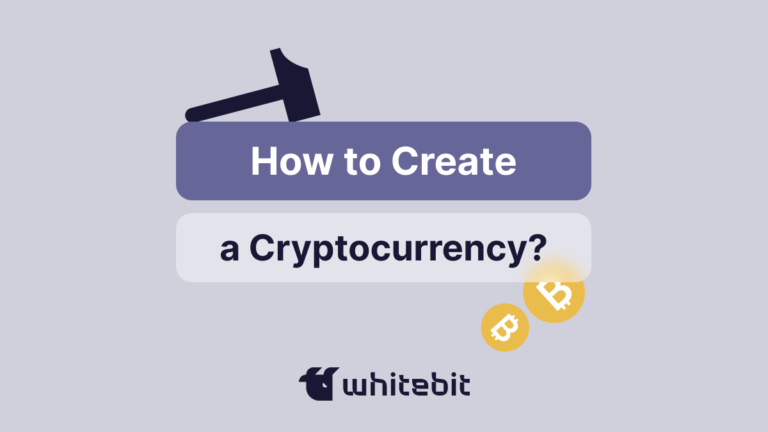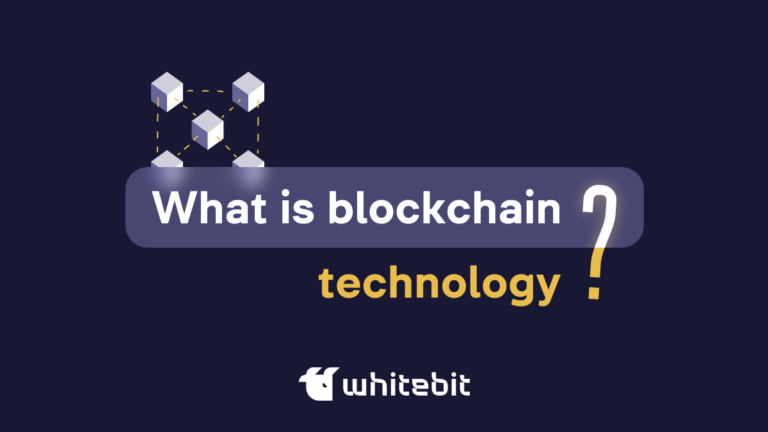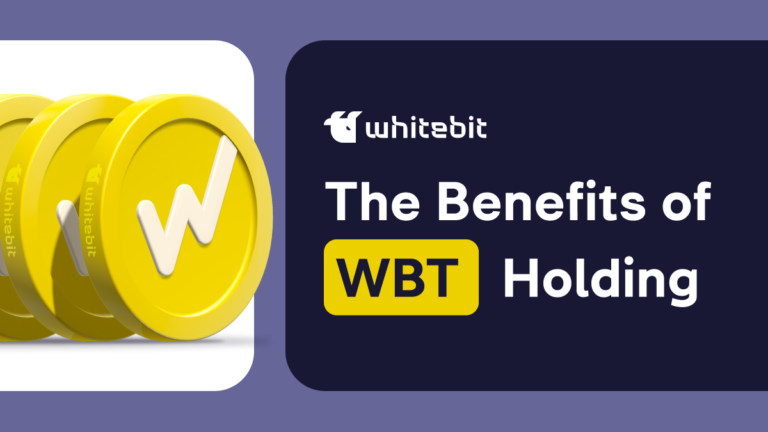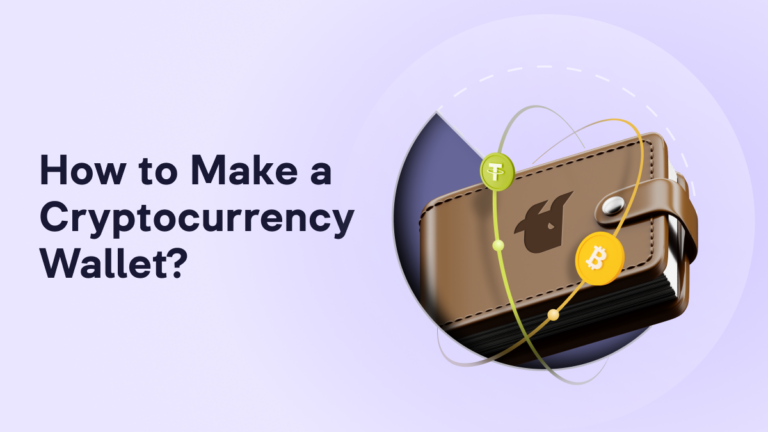What is a White Paper in Crypto, and Why is it Important?

Content
In the cryptocurrency realm, where innovation thrives and the future is forged, one term stands as a testament to the industry’s dynamism and potential for groundbreaking change. These documents, known as “White Papers,” mark the milestones of crypto revolutions, reflecting the essence of ambitious projects, and the visionary guides that shape the landscape of digital finance.
In this article, we delve into the topic of cryptocurrency White Papers, exploring what a White Paper, their significance, their impact, and how they propel the industry toward new horizons is.
What Does “White Paper” Mean?
A White Paper (also known as a white paper) is a comprehensive document that provides detailed technical information about a specific project or product. For example, a number of developers want to create a new app. There are primarily two kinds of an audience to turn to the White Paper for explanations as to “what this app is all about” — end-users who will enjoy the app’s services and other developers who might want to utilize the app’s functionality. While they have questions, White Papers hold the answers.
The same rule applies to new projects in the cryptocurrency realm. There are white papers for new assets, blockchains, and any other products created with decentralized technology. White Papers serve as a way for the creators of a cryptocurrency or blockchain project to communicate their vision and plans to potential investors, developers, and the wider community, giving their White Paper meaning, influential power, and resourcefulness. Investors and enthusiasts often rely on white papers to evaluate the merits of a project and understand its underlying technology before deciding to invest or get involved.
Purpose of a White Paper
The main goal of those who write White Papers is to deliver all-encompassing technical information about their project. Hence, White Papers are a primary source of information when it comes to scrutinized research of any kind of technological development. Call it a “passport” of a project, typically outlining its purpose, technology, features, goals, and technical specifications.
The primary purpose of a cryptocurrency White Paper is to educate, inform, and create transparency. It serves as a source of information for potential investors, developers, and the community, helping them understand the project’s technology and goals. Additionally, it can facilitate legal and regulatory compliance, serve as a marketing tool, and foster community building. In essence, white papers are crucial documents for explaining, promoting, and advancing blockchain and cryptocurrency projects.
What information can be found in the cryptocurrency White Paper?
To begin with, the creators of White Papers are the ones to decide what information they want to share with the audience. The more information it includes, the more trustworthy the project appears to the users. A properly written white paper that includes numbers, technical specifications, and analytics increases transparency and facilitates the trust of potential users and/or investors, since it’s the primary source of information at the launch stages as well as throughout the whole project’s lifespan.
White Paper crypto typically contains the following information:
- Introduction and Background: An overview of the project, its goals, and the problem it aims to solve. Trigger warning: some projects dedicate close to 60% of the whole paper to poetic descriptions of their goal. While it’s not a bad thing, it doesn’t define the project as trustworthy.
- Technology and Architecture: Details about the underlying technology, including how the blockchain or cryptocurrency functions, the consensus mechanism, and technical specifications.
- Tokenomics: Information about the project’s native token or cryptocurrency, including its distribution, supply, and utility within the ecosystem.
- Use Cases: Descriptions of potential use cases or applications of cryptocurrency or blockchain technology.
- Roadmap: A timeline outlining the development milestones and future plans for the project.
- Team and Advisors: Profiles of the project’s founders, developers, and advisors, highlighting their experience and expertise.
- Legal and Regulatory Information: Compliance with legal and regulatory requirements, especially concerning ICOs or STOs.
- Security Measures: Details on the security measures in place to protect the network and user assets.
- Economic Model: An explanation of the project’s economic model, including incentives for users, miners, stakeholders, etc.
- Governance: Information about how decisions are made within the project, including community governance structures.
- Use of Funds: If applicable, a breakdown of how funds were raised during a token sale or initial coin offering will be used.
- Conclusion: A summary of the project’s key points and vision.
How to Read a Crypto White Paper?
Before you start digging into a cryptocurrency white paper, make sure you’ve got the basics down. Understanding cryptocurrencies and how they work is essential. To understand and evaluate the meaning of a project, you’ll have to be familiar with the basic concepts of the sphere the project relates to. You’ll want to know what blockchain is, how decentralization works, and what mining means. These are the building blocks of the crypto world.
- The Intro
When you open a crypto white paper, look for the beginning part called the “abstract” and “introduction.” They’re like the sneak peek of a movie. You’ll get a quick summary of what the whole white paper is about. Starting here helps you figure out if this paper is what you’re looking for.
- Dive into the Tech Part
Crypto white papers can be pretty techy, with many big words. But don’t let that scare you off. Take your time to understand the technical bits – it’s like discovering the engine of a car. Try to get the hang of how the cryptocurrency works under the hood.
- Explore the Aspirations
Besides the techie issues, white papers also talk about what the project wants to achieve and what it values. This part helps you see if their goals match your own.
- The Grand Finale
Skip to the end to read the conclusion. It’s like reading the last chapter of a book. You’ll quickly determine if the project is worth your time and curiosity.
- Do Your Own Research
After reading the white paper, don’t stop there. Do more research by checking out news articles, online discussions, and social media. It’s like asking around about a restaurant before you decide to try it.
In the end, reading a crypto white paper may look challenging, but these tips will help you decode the complexity of the theory. Remember to focus on the technical parts, check if the project’s values match yours, and do extra research to make an informed choice about getting involved with it.
Examples of Cryptocurrency White Papers
There are thousands of cryptocurrencies, meaning thousands of white papers describing their values, characteristics, and roadmaps. Let’s start with the most fundamental white papers that define the term and set the level for cryptocurrency creators and users.
Bitcoin White Paper
A bitcoin White Paper, titled “Bitcoin: A Peer-to-Peer Electronic Cash System,” was authored by the pseudonymous Satoshi Nakamoto and released in October 2008. It is the foundational document for creating Bitcoin, the world’s first cryptocurrency. This document addresses the need for a decentralized electronic cash system, highlighting the limitations of traditional financial systems and the risks associated with centralized digital currencies.
Satoshi Nakamoto introduced the concept of peer-to-peer transactions, eliminating the need for a trusted third party, such as a bank, to facilitate financial transactions. The White Paper introduces the concept of the blockchain, a public ledger that records all Bitcoin transactions. It explains how the blockchain is maintained and secured through a network of nodes (computers) using a consensus mechanism called Proof-of-Work.
The White Paper describes a system for timestamping transactions using a cryptographic proof-of-work function, which prevents double-spending of coins and ensures the chronological order of transactions. It also introduces the concept of “mining” as the process by which new transactions are added to the blockchain. Miners compete to solve complex mathematical puzzles, and the first to solve them gets the right to add a new block of transactions to the chain.
The document outlines the incentives for miners, who are rewarded with newly created Bitcoins and transaction fees for their efforts. This system encourages miners to contribute to the network’s security. It specifies that the total supply of Bitcoin is capped at 21 million coins, creating a deflationary economic model to prevent inflation.
The White Paper emphasizes the importance of decentralization, highlighting that Bitcoin’s security relies on the distributed network and is not controlled by a single entity. It summarizes the key concepts introduced and their significance for creating a new digital currency.
The Bitcoin White Paper laid the groundwork for the development and adoption of Bitcoin, serving as the cornerstone of the crypto industry. Today, BTC is widely traded against stablecoins like Tether (USDT), making the BTC/USDT trading pair one of the most popular cryptocurrency markets.
Ethereum White Paper
Another vivid example of a white paper that most crypto enthusiasts now study is the Ethereum White Paper, authored by Vitalik Buterin and released in late 2013. Its novelty lies in the fact that it introduced a groundbreaking concept that expanded beyond the primary function of Bitcoin. Unlike Bitcoin’s sole purpose as a digital currency, Ethereum aimed to create a decentralized platform for smart contracts and decentralized applications (DApps).
In this White Paper, the core idea of Ethereum was introduced: a blockchain-based platform that could support programmable contracts, enabling trustless and automated interactions between users. These “smart contracts” would execute predefined actions automatically when specific conditions were met, removing the need for intermediaries in many situations.
Ethereum’s architecture, as outlined in the White Paper, was designed to be more versatile and flexible than Bitcoin’s. It introduced a new programming language called Solidity, crafted explicitly for creating smart contracts. Ethereum also introduced its native cryptocurrency, Ether (ETH), which serves both as a medium of crypto exchange within the network and as a way to pay for transaction fees and computational services.
The White Paper emphasized Ethereum’s vision of a decentralized and censorship-resistant global computer where applications could be built without reliance on central authorities. It showcased the potential applications of Ethereum, such as decentralized financial services, supply chain management, and more.
The Ethereum White Paper played a pivotal role in inspiring the development of the Ethereum network and the subsequent boom of DApps and DeFi (Decentralized Finance) applications. Today, Ethereum is one of the most influential and widely used blockchain platforms in the cryptocurrency and blockchain space.
WB Network White Paper
WB Network is a native blockchain of WhiteBIT, one of the biggest cryptocurrency exchanges in Europe. The network was created with several essential aims in mind, targeting the solution of inter-exchange goals, as well as long-existing issues of the blockchain realm.
The creation of the WB Network has been realized as part of WhiteBIT Token (WBT) development, a native asset of WhiteBIT exchange. Thanks to the successful implementation of the WB Network blockchain, WBT has found a new residence, becoming a full-fledged coin, WBT Coin (WBT).
In the WB Network White Paper, the developers laid out the main reasons for the blockchain creation, highlighting the importance of a secure and stable network to bind and support all the rest projects of the ecosystem, all while boosting the means to implement the essential goal of WhiteBIT — widespread adoption of high-end blockchain technologies in people’s everyday lives.
The team’s principles are laid out in a brief but informative manner, following the guidelines of a White Paper composition: stability, security, simplicity, speed, sustainability, and transparency. To support and maintain these principles, as well as solve the blockchain trilemma, the team chose Proof-of-Authority (PoA) as the consensus algorithm. Thanks to the presence of authorized validator nodes, PoA serves to ensure maximum security for users, low transaction fees, resilience to hacker attacks, and high transaction speed.
WhiteBIT Coin (WBT) is described fairly precisely because it stands as close to the center of the whole WhiteBIT ecosystem as WB Network. With no further ado, the paper elaborates on the supply distribution of the asset, including information on WBT funds and the amount of coins allocated for each fund, the details of the private sale, the unlocking procedure, and its burning. This data is essential for providing transparency and building trust for the users.
At the stages of being a token, WBT already provided numerous benefits to its owners and holders. Having bought WBT, WhiteBIT users can either have it on their Main balances, or keep it in Holding. Holding opens up more possibilities of benefitting from WBT, namely free ETH and ERC20 tokens withdrawals, down to 100% trading fee decrease, free AML checks, advanced referral program, and more. The description of WBT benefits introduces the importance of the native coin in the life of the blockchain ecosystem.
Being developed on Go-Ethereum (Geth), WB Network is an EVM-compatible blockchain, containing several modifications to the protocol to improve its foundation, while maintaining the tokenomics of WBT. The White Paper contains specifications on the protocol modification, which includes the method of issuing new coins, and the method of secure and resilient transfer of WBT from Ethereum and Tron networks to WB Network.
Another essential part of the WB Network generously described in its White Paper is the WB Soul Ecosystem. WB Soul serves as a central point in the whole ecosystem, representing the individual identities of WhiteBIT and WB Network users. Each user who passes identity verification on the WhiteBIT exchange can recreate their identity in the WB Soul Ecosystem on WB Network with the help of WB Soul. To create a WB Soul, one must pass KYC verification and link the WB Network or Ethereum wallet to the WhiteBIT account. The uniqueness and personalization of each WB Soul is achieved thanks to WB Soul Features divided into Soul Attributes and SoulBound Tokens.
Soul Attributes and SoulBound Tokens (SBTs) characterize each WB Soul. However, their difference lies in the following: Attributes are mutable WB Soul characteristics (for example, the WBT Holding amount on WhiteBIT). They can change over time based on the user’s actions or other factors. SBTs are immutable characteristics of a WB Soul. They represent unique accomplishments or statuses associated with the WB Soul. You can consider them to be achievements or medals. Each SBT is issued only once and cannot be modified or transferred.
WhiteBIT Coin holders can also participate in a unique marketing activity unfolding in the WB Soul Ecosystem — SoulDrop. The rewards are calculated every 30 days and depend on the Level and Amount of WBT in Holding. The cornerstone of the SoulDrop rewards distribution mechanism is the SoulDrop Contract that governs the rules for distributing marketing activity rewards to holders of WBT in the form of base coin – WhiteBIT Coin (WBT). The rewarding principle, percentage, as well as a detailed guide on participation is also laid out in the WB Network White Paper.
Solana White Paper
Solana, a high-performance blockchain platform, presents an innovative approach to scalability and performance in its White Paper Solana. It introduces Proof of History (PoH), a unique consensus mechanism combining PoS and PoW elements to timestamp transactions, improving ledger efficiency.
Parallel processing boosts network throughput by allowing concurrent transaction handling. Optimized cryptography and hardware acceleration enhance transaction speed while maintaining security.
Smart contracts, developed in Rust, are supported, and decentralized storage secures transaction data. SOL, the native token, is discussed with insights into distribution and utility.
The White Paper outlines security measures, network components, and Solana’s commitment to addressing scalability and performance challenges in blockchain technology.
How to Create a White Paper?
To attract the public’s attention to your project, creators must understand how to write a White Paper correctly. Creating a White Paper, particularly in blockchain and cryptocurrencies, involves thorough research, careful planning, and effective communication of your project’s goals and technical details. Here are the key steps to create a White Paper:
- Define Your Project: Clearly define the project you want to document in the White Paper. This includes the problem your project aims to solve, your goals and the technology or solution you plan to develop.
- Audience Analysis: Identify your target audience. Understand whether you’re addressing developers, potential investors, or a broader community. Tailor your language and content to their level of expertise and interest.
- Market Research: Research the current state of the market or problem your project addresses. Identify existing solutions and their shortcomings. Explain why your project is necessary and how it stands out.
- Technical Details: Provide detailed information about the technology you’re using. Explain your project’s architecture, consensus mechanism (if blockchain-related), and other technical components. Be thorough but clear, making complex concepts accessible.
- Tokenomics: If your project involves a native token or cryptocurrency, detail its purpose, distribution, and utility within the ecosystem.
- Use Cases: Describe real-world use cases for your project. Explain how it can benefit users and solve practical problems.
- Roadmap: Present a roadmap outlining your project’s development milestones and expected timelines. This helps build trust and confidence in your project.
- Team and Advisors: Introduce your team, their qualifications, and experience. Highlight any advisors or partnerships that add credibility to your project.
- Legal and Regulatory Compliance: Address legal and regulatory considerations. Discuss how your project complies with relevant laws and regulations, and any steps you’ve taken to ensure compliance.
- Security Measures: Describe the security measures in place to protect the project, especially if it involves a blockchain or cryptocurrency. This includes details on consensus mechanisms, cryptography, and other security features.
- Visuals and Graphics: Incorporate visuals, charts, and graphics to make complex concepts more understandable. Visuals can significantly improve the readability of your White Paper.
- Peer Review: Consider having your White Paper reviewed by experts in the field. Their feedback can help you improve the document’s clarity and accuracy.
- Editing and Proofreading: Ensure that your White Paper is well-written and free of grammatical errors. Clear and concise writing is essential to convey your message effectively.
- Formatting: Pay attention to the document’s formatting, including headings, fonts, and overall design. A well-organized White Paper is more engaging.
- Distribution: Once your White Paper is ready, decide on a distribution strategy. You may choose to publish it on your project’s website, share it on social media, or present it to potential investors.
- Engage with the Community: Be prepared to engage with the community, answer questions, and provide clarifications on your White Paper. Transparency and open communication can build trust.
A White Paper is a critical document that explains your project and represents your project’s professionalism and credibility. As such, it’s worth investing time and effort to create a well-structured and informative document.
In the dynamic world of cryptocurrency, White Papers are the bedrock of innovative projects. They don't just outline technical details but also paint a vision of what's possible in the blockchain realm. As the crypto space grows, White Papers will remain guiding lights for developers, investors, and enthusiasts. They are more than documents; they bridge ideas and reality, shaping the digital landscape. It's vital to learn from White Papers and apply their insights to push the boundaries in the crypto and blockchain space.










